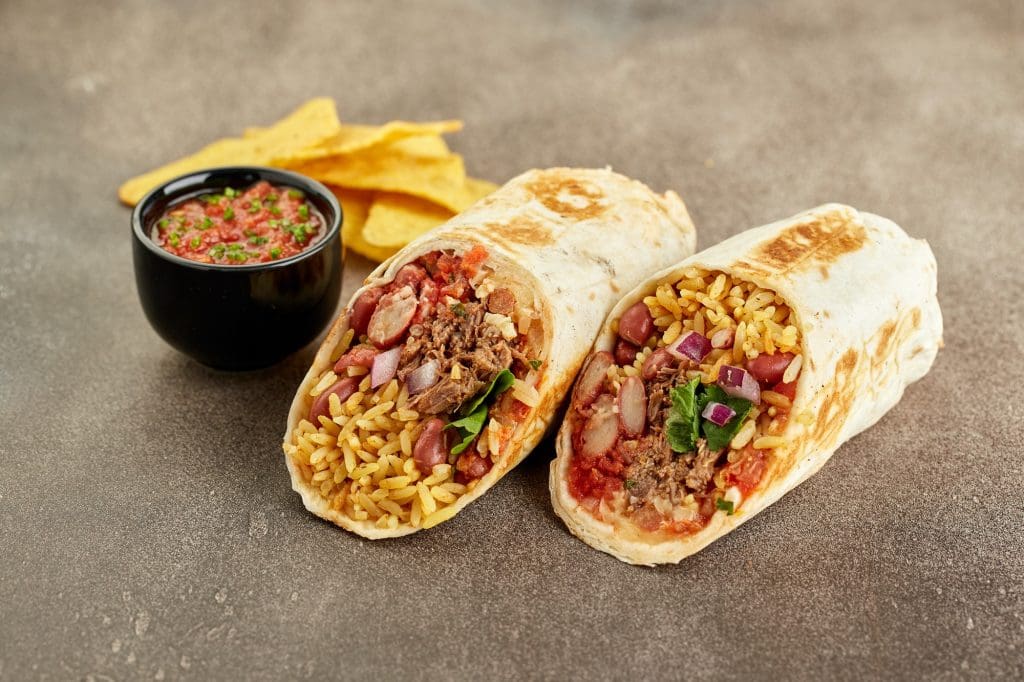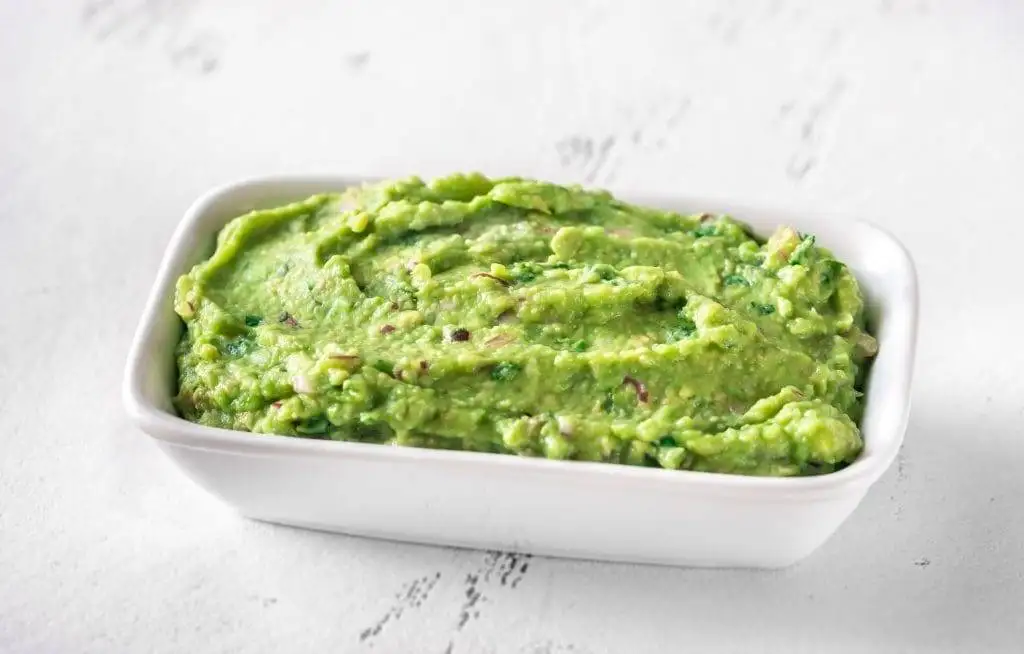How to Reheat Salmon 3 Simplest Ways to Keep it Tender

Are you looking for the best way to reheat cooked salmon and achieve great results?
Salmon is one of the most popular seafood dishes on the planet, but there’s a problem—it can be a challenging fish to reheat. On day one it’s always a tender and succulent treat. However, when you try to reheat salmon, it can easily get dry, rubbery, and, well, fishy to an extreme degree. If you’ve banished that second-hand fish to the trash instead of the table a time or two, you are not alone!
Nevertheless, it’s a shame to let something so wonderful come to such a sad end—and frankly, you don’t have to. Your leftover salmon can be great again. You just have to reheat it the right way, and I’ll show you how!
Related Post: How to Reheat Smoked Salmon
Below you’ll find easy-to-follow instructions to reheat salmon with tasty results, including multiple methods that work for anybody. I’ve also got some fishy facts for you to help demystify this complicated fish, and a juicy salmon secret that might just surprise you, too!
So, ready to dive in?
A Salmon Secret Everyone Should Know
Some people love that strong, very distinct salmony taste, while others prefer a more subtle, milder flavor to their salmon. And the truth is, there’s no right or wrong preference. There are species out there that will give you that strong flavor, and other species that are much tamer in flavor, too. The real trick to enjoying this fish is to know the difference so that you don’t end up with a disappointing meal. If you think you don’t care for salmon, maybe you’re just buying the wrong kind!
Now, it’s easy to think that the color of the meat has a bearing on how flavorful the salmon tastes, right? But here’s a secret that the food industry does not want you to know: The shade or color has absolutely no impact on the flavor! The meat only develops its coloring from what the fish eats. It is not a genetic trait. In fact, the flesh of farm-raised salmon is naturally very pale or even grayish in color.
But by the time you see it, it has typically become a gorgeous shade of pink, orange, or red. How? Because they feed the fish a special additive to make them turn that color. Yup—it’s a dye job to make the fish look more attractive, folks. You’ve been had. The Coho’s carpet does not match the drapes!

Making a Smart Choice
If you find yourself tasked with picking out a fresh piece of salmon, forget that deceptive color and look for bright, glistening flesh that has little or no fishy smell. Dull-looking, slimy, or strong-smelling fish is old. It not going to be good, no matter how much red food dye it’s been fed!
But those genetics do matter in terms of taste. Do you know which salmon species are naturally milder in flavor and which are bolder? Here’s an easy guide to help you make a wise choice:
Pink (Humpback) Salmon – Very mild in flavor, typically pink in color, and low in fat. Often canned and used in salads.
Coho (Silver) Salmon – A mild but tasty fish, usually reddish-orange in color. Low to moderate fat content. A favorite choice for people who like salmon but want a mellower flavor.
King (Chinook) Salmon – A bolder-flavored fish, reddish-orange to dark pink in color. This fish has a high fat content and is known for its exceptional, buttery flavor. A prized filet for salmon lovers (and often the most expensive).
Sockeye (Red) Salmon – An intensely flavorful fish with orange flesh and a very high, oily fat content. Another favorite among salmon lovers who appreciate that strong punch of flavor. The preferred choice for sushi, too.
Salmon: Atlantic vs. Pacific / Farmed vs. Wild-Caught / Frozen vs. Fresh
There may also be some confusion about frozen vs. fresh offerings, Atlantic vs. Pacific salmon, and farm-raised vs. wild-caught varieties. Here’s what you need to know:
Fresh vs. Frozen Salmon
Fresh fish that has never been frozen will always have a superior texture. However, it’s not always easy to find, and it’s not necessarily going to be the freshest option either. Experts say that fresh fish should ideally be consumed no later than 3 days after it was caught. After that, it begins to degrade.
So, how long did it take for your fish to get from the place it was caught to your store or restaurant? And how long was it there already? The answer to these questions will have a bearing on whether or not it is your best choice.
Frozen fish, on the other hand, is easier to find, and it was also likely frozen when it was very fresh. But freezing is not so great for the fish’s texture. The freezing process causes ice crystals to form at the cellular level, and that damages the meat and makes it mushier in texture. The longer it takes the fish to freeze, the worse the damage. However, flash-freezingthe fish does prevent a great deal of that damage.
So, if you are leaning towards a frozen offering, always look for a fish that is specifically labeled as flash-frozen. It still won’t have the perfect texture of never-frozen fish, but you might find it to be a very acceptable compromise.
Atlantic vs. Pacific Salmon / Farm-raised vs. Wild-Caught Salmon
Atlantic salmon are more readily available year-round because those are the ones that are generally farmed-raised. (The only place you’ll still find wild-caught Atlantic salmon is around Maine.) Pacific salmon, on the other hand, are almost always wild-caught. Because of that, they are also harder to find (at least in fresh form) because availability is dictated by the spawning season.
In terms of health benefits, both have pros and cons. Atlantic varieties usually have more fat, and that means you are getting more of the omega-3 fatty acids that are so good for you. However, Pacific varieties have firmer flesh in general (which some people say is better), and they are typically higher in vitamins and minerals, too. And while Pacific salmon is typically lower in fat, that is not necessarily a bad thing either, depending on your personal preferences.
So, the choice is yours, but now you know!
Methods of Reheating Salmon
The most common ways to reheat salmon are the oven, air fryer, and microwave. All three will work, but the best way to reheat salmon is in your oven. When it comes to preserving taste and texture, low and slow is the way to go, and the oven is the way to do that.
The air fryer is my second choice to reheat salmon. It does a decent job and it is faster and more energy efficient than the oven, however, be warned that your fish is probably going to be a little drier in texture.
Lastly, there’s the microwave. That’s my least favorite way to reheat salmon, but I have to concede that it is also the fastest and most convenient. Still, it will likely not have the best texture, and the microwave also tends to amplify that overly fishy smell that we all want to avoid. Or in other words—reheating salmon in microwave is a stink bomb! (So please don’t reheat salmon in the microwave at work. You can bet you’ll be getting the stink-eye from your coworkers if you do!)

How to Reheat Salmon in Oven
- Take your leftover salmon out of the fridge and let it come up to room temperature for about 15 minutes.
If your salmon is a bit tasteless, sprinkling on a flavorful seasoning when you reheat it, can do wonders for the taste. Try Chef Paul Prudhomme’s Magic Salmon Seasoning—it’s fantastic!
- Preheat your oven to 275ºF.
- Line a rimmed baking sheet with foil or parchment paper.
Parchment bags are a wonderful option to reheat salmon in (and for cooking as well). I love these perfectly sized ones from PaperChef.
- Brush a little olive oil or butter on the bottom of your foil or parchment.
- Next, sprinkle a couple of tablespoons of water across the bottom of the sheet. You can add a few slices of citrus on top as well (lemon, lime, or orange) to help brighten up the flavor.
- Add your salmon to the pan (skin side down if it has any) and cover it tightly with foil.
(The water you added helps the fish stay moist, and the foil seals it in so it doesn’t just evaporate inside your oven.)
- Reheat salmon in oven for about 15 minutes. Then, check it with a food thermometer. If it has reached 130º, it’s ready. If not, put it back in until it reaches the proper temperature.
How to Reheat Salmon in Air Fryer
- Take your leftover salmon out of the fridge and let it come up to room temperature for about 15 minutes.
- Set your air fryer to 350ºF.
- Add your salmon to the fryer basket (skin side down if it has any).
- Reheat salmon in the air fryer for 3 minutes. Then, check it with a food thermometer. If it has reached 130º, it’s ready. If not, put it back in for a couple of minutes and check again. Repeat until it reaches the proper temperature.
Serve with a wedge of fresh lemon (or lime). It will help brighten up the flavor!

How to Reheat Salmon in Microwave
-
- Take your leftover salmon out of the fridge and let it come up to room temperature for about 15 minutes.
- Place your salmon on a microwave-safe plate.
- Add a couple of tablespoons of water to the plate.
- Add your salmon to the plate (skin side down if there is any).
- (Optional but recommended.) You can add a few slices of citrus to the plate as well (lemon, lime, or orange) to help brighten up the flavor.
- Cover the entire plate with a damp paper towel. (This helps preserve moistness
- Reheat salmon in microwave on low (30% power) for 1 minute.
- Flip your salmon over and continue reheating on low (30% power) for another minute.
- Check the salmon’s temperature. If it has reached 130º, it’s ready to serve. If not, put it back in for another 30 seconds and check again. Repeat until it reaches the proper temperature.
Frequently Asked Questions
How long can I keep leftover salmon in my fridge?
No more than 3 days. Then it will need to be discarded because of spoilage and bacterial growth.
Can I reheat salmon more than once?
No, never try to reheat salmon more than once. The texture would be terrible, and it could have bacteria growing in it that might make you sick.
Is there a way to crisp up my soggy skin when I reheat salmon?
Yes, but you’ll need to do it separately in a frying pan. Gently remove the skin from the fish. Heat the pan over medium-high heat, add a dab of olive oil or butter, and add the skin once your oil/butter is hot. It should only take a few minutes to get crispy.
Can I use these instructions to reheat smoked salmon?
That process is a little different. Check out my tutorial on how to heat up smoked salmon instead.
Help! I reheated my salmon but now my whole house smells like fish. How can I get rid of the stench?
You can simmer a pan of water, vinegar, and lemon juice on the stove for about 20 minutes. That will help, but you might not be happy about your house smelling like vinegar either. Your best bet is the odor eliminator Zorb-X. Trust me, every home needs to have this awesome spray handy! If you cook or reheat salmon (or any other kind of fish) at home, Zorb-X is going to be your best friend!
Are you looking for the best way to reheat cooked salmon and achieve great results?
Salmon is one of the most popular seafood dishes on the planet, but there’s a problem—it can be a challenging fish to reheat. On day one it’s always a tender and succulent treat. However, when you try to reheat salmon, it can easily get dry, rubbery, and, well, fishy to an extreme degree. If you’ve banished that second-hand fish to the trash instead of the table a time or two, you are not alone!
Nevertheless, it’s a shame to let something so wonderful come to such a sad end—and frankly, you don’t have to. Your leftover salmon can be great again. You just have to reheat it the right way, and here you have my techniques on reheating salmon.




